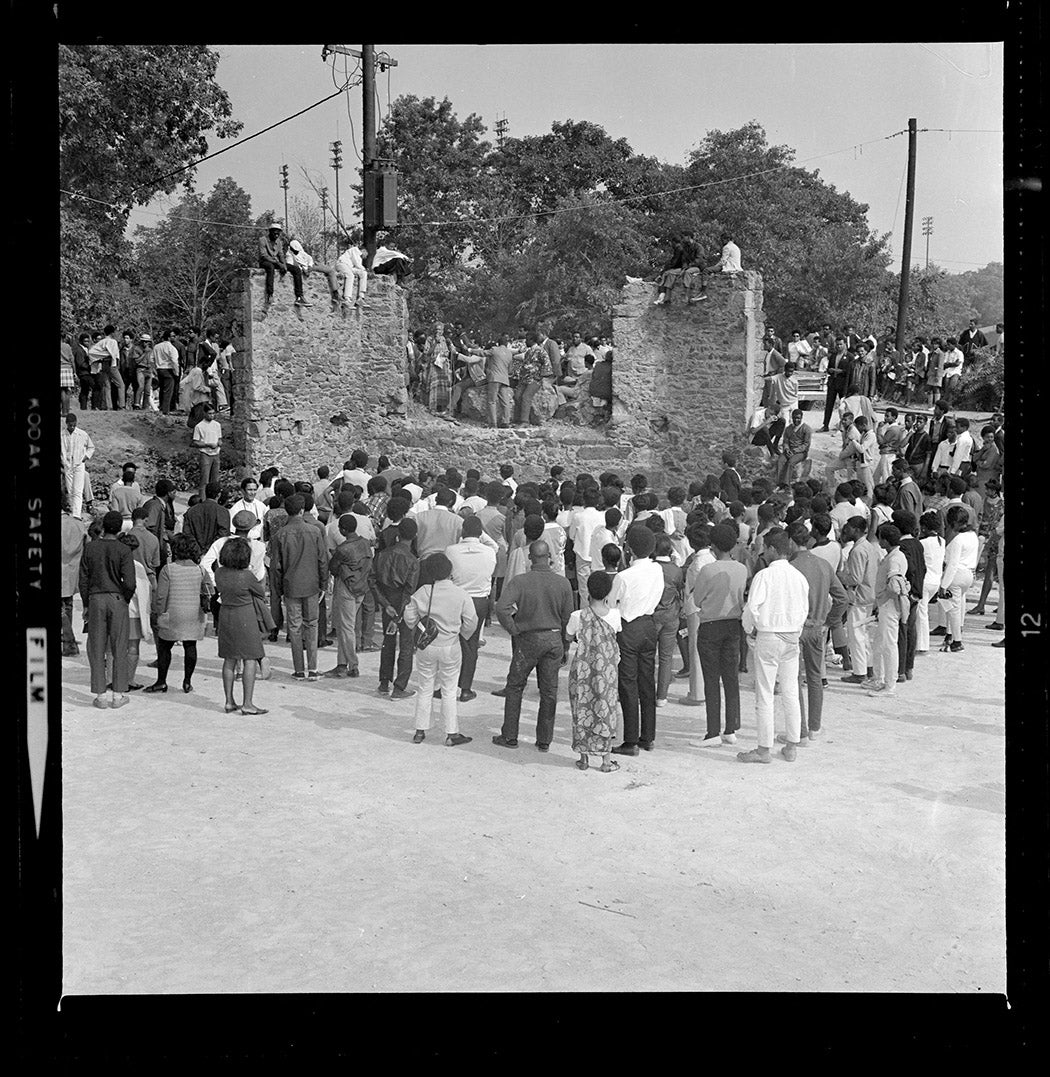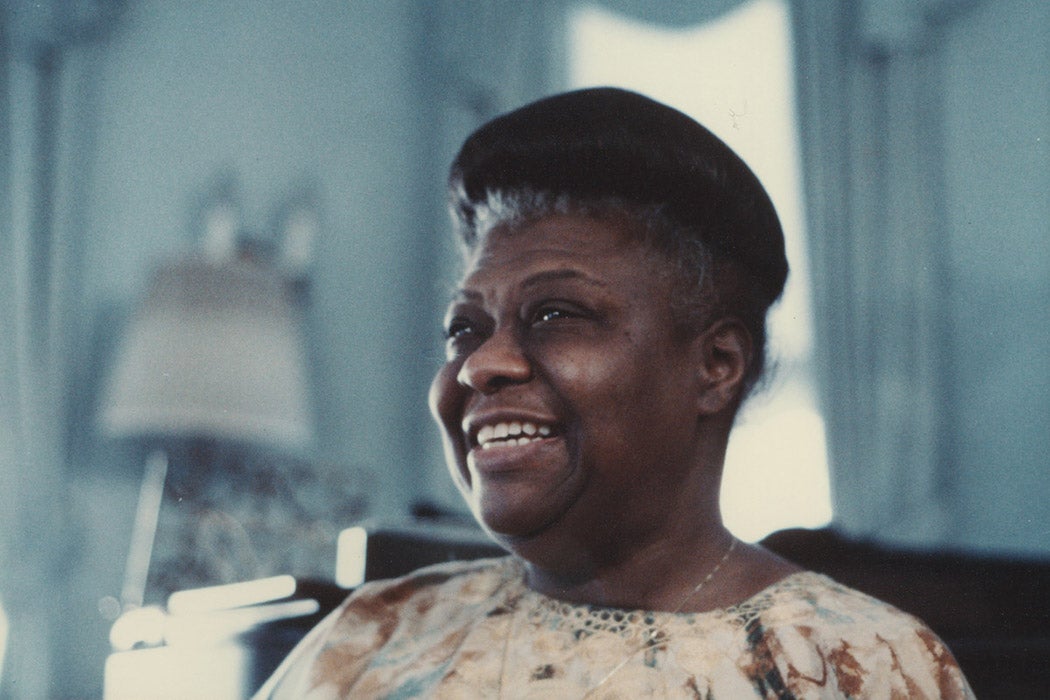Elma Lewis, who died in 2004 at the age of 82, wore many hats. She was a bridge leader activist, an artist, and an educator. But in the Boston area, she was known best as a “doyenne of Black culture” and Roxbury’s “matron of the arts.”
Born in 1920s Boston, Lewis grew up poor during the Great Depression. As a child, she was surrounded by art and politics in many forms: lectures, recitals, church teas, concerts at Boston’s Symphony Hall, and chapter meetings of the United Negro Improvement Association (UNIA). According to historian Daniel McClure, by age eleven, she was giving poetry “platform” readings at local churches, inspired by the pan-African politics of Marcus Garvey, and earning five times as much as her father. She saved enough to attend Emerson College and then Boston University, where she earned a Masters in Education. During her time at Emerson, she also became a teacher at Boston’s Doris Jones School of Dance.
In 1950, Lewis founded the Elma Lewis School of the Fine Arts (ELSFA), which received no external funding and “survived only through small-scale community fundraising, the efforts of Lewis, and a committed cadre of volunteers from Boston’s [B]lack community.” Exemplifying her investment in “community cultural development,” the ELSFA offered far more than just art classes. Led by Lewis, offerings focused on “cultural work such as the development of [B]lack-culture-centered educational and social programs that served Boston’s [B]lack community,” McClure writes.
Lewis pushed for the creation of institutions like the ELSFA in the historically Black neighborhoods of Roxbury and Dorchester not only because of her love of the arts. Her actions grew out of a belief that arts and education were “vehicles of black empowerment.” She created institutions and programs that helped people better understand links between art, activism, and their identities.
Expanding on the small-scale community fundraising that supported the ELSFA, Lewis tapped into broader networks of influence in and beyond Boston to found the National Center of Afro-American Artists (NCAAA) and the Museum of the National Center of Afro-American Artists (MNCAAA) in 1968 and 1969, respectively.
“Her decision in 1966 to pursue external funding, to broaden her institutional vision, and to cultivate benefactors outside the [B]lack community was a practical step that expanded the focus of her activities and secured the immediate future of the ELSFA,” notes McClure.

In the 1960s and 1970s, the EFLSA, NCAAA, and MNCAAA all sponsored cultural events and programing aimed at diverse audiences. “[T]hese institutions and the networks that developed around them were also integral to national dialogues concerning the role of black art and artists, the relationship between culture and politics, and the significance of independent institutions,” McClure writes.
As a Black woman, Lewis had to not only face sexism in art spaces in Boston, but racism. Yet McClure notes that she “moved with ease and authority among Boston’s predominantly male power brokers, its predominantly white cultural elite, and the sometime ideologically divided black community organizations.”
“Ultimately, her commitment to institution building was a part of broader community-building efforts central to the local freedom movement,” McClure explains.
In her community-building work, Lewis also lobbied for change as an activist. This included, in Boston, fighting “against the city’s persistent machine politics, racial paternalism, and inequitable distribution of resources” in the 1960s and the 1970s.
McClure argues that Elma Lewis Playhouse in the Park, inaugurated in 1966, “was a tangible illustration of Lewis’s commitment to community cultural development and an example of the intersection of her role as cultural broker and community- and institution builder”
Weekly Newsletter
Sited in Boston’s Franklin Park, which stood at the heart of Boston’s black community between Upper Roxbury and North Dorchester, the Playhouse was immediately successful. Its programming ran, free-of-charge to the general public, every summer for a decade. In addition to promoting the arts, Lewis dedicated herself to restoring the park, “which had become a well-known dumping ground” for the city, founding the Franklin Park Coalition in 1971.
“In advocating for low-income residents and communities of color, she demonstrated the breadth of her institutional vision, her application of cultural politics to issues beyond discussions of identity and representation,” McClure concludes.
Editor’s Note: This story was amended to include more information about Elma Lewis’s university degrees.
Support JSTOR Daily! Join our new membership program on Patreon today.







